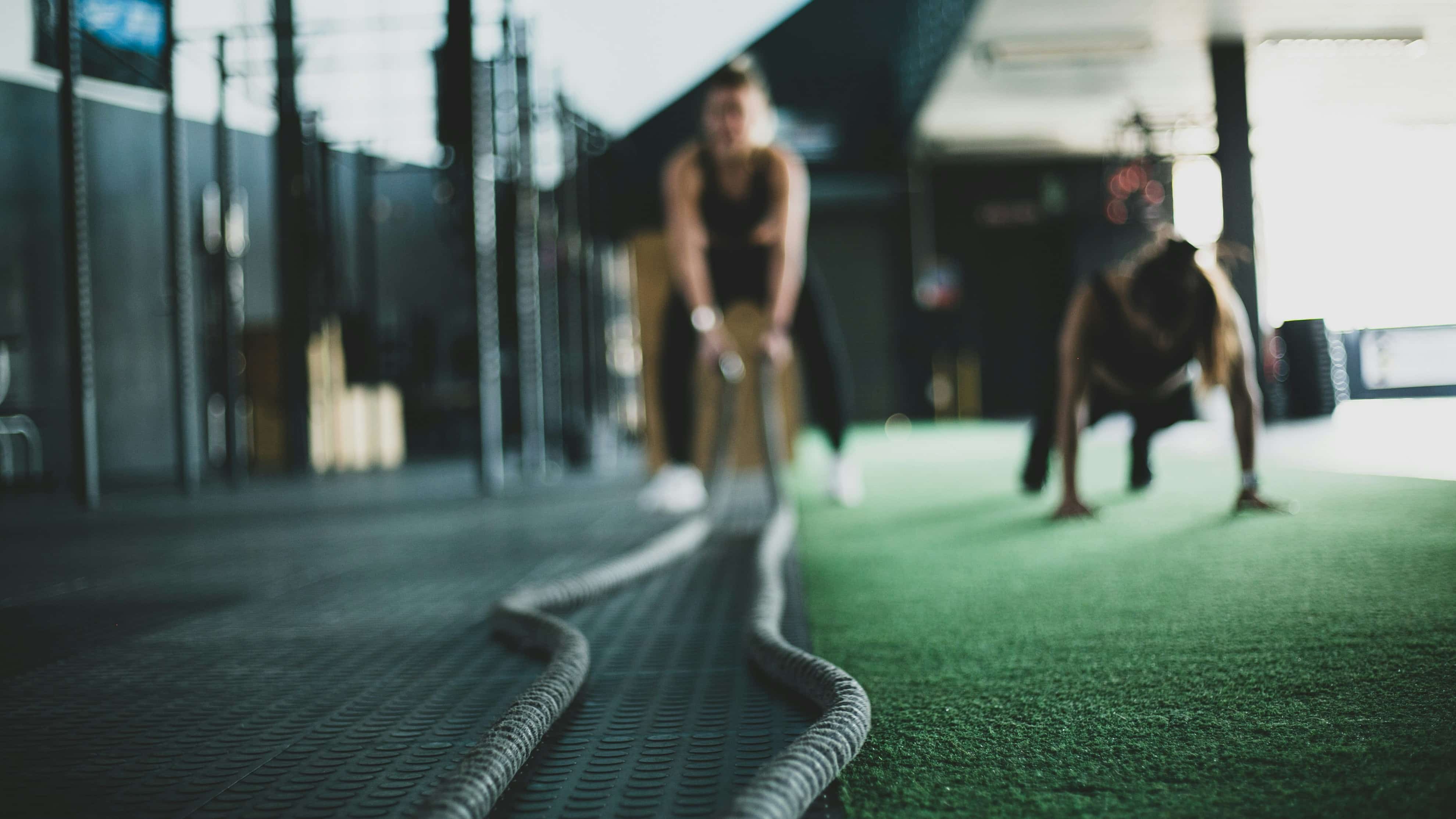When experts talk about immune health, they are referring to the ability of your immune system to recognize a pathogen, like a bacteria or virus that attacks different cells and systems; build the antibodies; and effectively kill or neutralize the bacteria or virus.
From what we eat to how much sleep we are getting, there are multiple environmental factors that impact our immune system’s ability to respond. Exercise, or more specifically, the impact of exercise on your body, is another environmental factor that can influence your immune response.
Fitness coaches, in addition to many holistic health and nutrition coaches, often have a component in their programs that includes exercise.
By integrating the principles of immune-strengthening exercise routines into your fitness programs, you can help clients improve fitness levels while also helping to ensure that the program will maximize the immune benefits of exercise.
In this article, we provide a clear, simple explanation of how exercise impacts the immune system. You can use the information to better understand current research as a coach, as well as to offer clear explanations to your clients.
Exercise and Immune Science, Simplified
How the Immune System Works: What You Need to Know
The immune system exists to safeguard the integrity of our cells, organs, and systems from pathogens—bacteria, viruses, fungi, and toxins. In short, it works to keep our bodies functioning optimally.
When the immune system is functioning optimally, it can kill off or remove pathogens from the body before you even realize you were exposed, or it uses the minimum amount of time and effort to recover your health after a pathogen has successfully started affecting cell and organ function.
- If you have a healthy immune system, it doesn’t mean that you won’t ever get sick. It means that your body will effectively recognize the pathogen and activate the antibodies, molecules that kill or remove pathogens.
- If you’ve never been exposed to that pathogen before, then a healthy immune response entails your body building one up in the shortest time possible. While this happens, it usually means you’ll feel ill for a few days.
- If parts of your immune system are stressed, damaged, or already addressing another health issue, it may take longer for your immune system to respond and reestablish healthy cells again.
What You Control, What You Don’t, and How That Affects the Immune System
Generally speaking, five factors influence your immune response:
- Metabolism: How your body balances energy requirements and distributes energy through the body
- Nutritional status: Whether or not all of your nutrient needs are met
- Infectious factors: Whether or not you have an infection or are susceptible to infection
- Hormonal factors: The concentration of different hormones in the body, including those that strengthen and weaken immune response
- Environmental factors: Exposure to toxins, pathogens, and air quality can affect individual immune responses.
As you look at the graphic above, you might be able to recognize each of the factors that influence immune response.
For example, regarding infectious factors, you may not be able to detect whether there are pathogens present in your environment, but you can wash your hands, clean and disinfect surfaces regularly, and avoid direct contact with people with contagious illnesses.
The effect is similar when it comes to environmental toxins—it is impossible to completely rule out exposure to toxins—they are present in even the cleanest of soil and water systems. However, by understanding where they are in our food and environments, we may choose to avoid certain foods and spending time in certain areas where environmental toxins are present in high concentrations.
When it comes to hormonal factors, you cannot control your genes’ “instructions” on when and how to make hormones, but you can take some actions to modify the hormonal response, including a balanced diet and exercise.
When it comes to your metabolism, like hormones, your genes have instructions on how your body should utilize and process nutrients and their metabolites. However, what you eat and how much you exercise will naturally modify your metabolism so that your body’s needs are met.
And finally, nutrition. There is the misconception that we have complete control over our nutrition—but that is untrue. While the action of eating is normally under our control, what we eat and what we have access to is not. You can read more about the factors out of a person’s control in this article about health behavior science.
Exercise as a Modifiable Lifestyle Factor That Influences Your Immune System Function
Over the past decades, researchers have been debating about the effect of different types and intensities of exercise on immune system response. If you are interested in the research findings, you can read about them here, but in this article we will give you the main takeaways.
This is what we know about how exercise affects immune response:
Exercise has a variable effect on the immune system.
How our immune system responds to exercise depends on:
- Intensity
- Duration
- Exhaustion levels
- Mode
- Types
To describe how the immune system responds to these different exercise factors, researchers have developed two models: the Open Window theory and the J-Curve model.
The Open Window theory describes how your immune system responds immediately after exercise of different intensities.
Intense exercise results in immediate immune stimulation as you exercise, but your immune system will be temporarily suppressed afterward. If you are exposed to pathogens during that “open window” period, you will be more likely to get ill. With moderate-intensity exercise, you get a slight boost in your immune stimulation during exercise, but it isn’t suppressed.
Source: Kakanis, et. al, 2010.
The second model to help understand exercise and its impact on the immune system is the J-Curve model.
The J-Curve model describes the risk of contracting an upper respiratory infection at differing exercise intensities. The benefit of this model is that it also shows how a sedentary lifestyle affects infection risk.
As you look at the graphic below, you’ll notice that the risk of contracting an upper respiratory infection while sedentary is higher than for moderate-intensity exercise but lower than for intense exercise, forming a “J-Curve,” implying that we should aim to carry out moderate-intensity exercise to strengthen the immune response.
Are you unsure what moderate-intensity exercise looks or feels like? Check out this article on the latest physical activity guidelines.
Principles for Exercising for a Strong Immune System
How can you apply immune system science when building exercise routines for your clients? Here are six research-based principles for building an immune system-strengthening exercise routine:
- Practice moderate-intensity exercise, as opposed to light or vigorous exercise. This will lead to an enhanced immune response, a reduced risk of chronic disease, and your body fights the effects of aging on immune function. Moderate exercise equates to 50-70% of your maximum heart rate.
- Have a post-exercise snack. Carbohydrate availability helps to reduce the inflammatory response our bodies have after exercise.
- Avoid getting exhausted. Exhaustion can compromise your immune system for 24 hours after the event that caused the exhaustion.
- Gradually increase intensity and duration of exercise over time. As you become fitter, you’ll need to adjust your exercise so that you remain in the moderate-intensity exercise window.
- Make exercise part of your routine: Getting at least 150 minutes of moderate-intensity physical activity a week results in reduced systemic inflammation.
- Rest and recover after intense exercise: Vigorous or high-intensity exercise has several benefits for athletes. However, the effect on their immune system is the same. If you do carry out high-intensity exercise, give your body time to rest and recover, and take precautions if you will be exposed to pathogens and toxins.
Want to learn more? We go into greater detail about these principles in this article.
Simplifying Science: The Importance of Communicating Simply and Clearly in Coaching

Get Your Free Guide
Learn How to Start a Fulfilling, Impactful Career as a Holistic Health Coach
You’ll learn:
- Why holistic health matters
- If holistic health coaching is right for you
- What career opportunities exist for health coaches
- And more!
As a health and fitness coach, you know the importance of communication in your behavior change and health promotion strategies. In the Transtheoretical Stages of Change Model, illustrated below, providing information in a way that makes sense to your clients and that responds to their needs is a vital part of helping clients progress through the stages to adopt desired behaviors.
Clearly communicating how exercise influences their immune system may be a vital part of helping your clients adopt and maintain exercise habits.
3 Tips for Using Immune Science to Support Clients with Exercise Routines
Provide information on the factors that influence individual immune response.
Most people have little interest in the difference between T cells, B cells, and phagocytes and what actually happens on a chemical level when a pathogen enters the body.
In reality, most clients, even those who are interested in understanding how their specific actions and habits impact their health, want to know what things are in their control that can modify their health.
When it comes to immune system response, it’s easy to get really technical and lose your clients in the process.
Instead, give them an overview of the different factors that influence their immune response to show them that there are things within their control and others that are not.
Need guidance as you speak to clients? Print out the graphics included in this article or share it with them digitally to use as a teaching tool.
Have clarity on the immune response to exercise.
If immune response strengthening is a key strategy in your fitness coaching, it is important that you understand what happens in the body in people who don’t exercise and who do exercise.
Carry out more detailed research on the immune response to exercise and be prepared to answer questions from clients.
Use the principles we mention above to build immune-boosting exercise routines.
Focus on moderate-intensity exercise routines, and know how to measure exercise intensity levels.
Keep in mind that moderate intensity is a measure of your heart rate (50-70% maximum heart rate). For some people, walking might be enough for them to get their heart rate going, while others may need to run or carry out resistance exercise.
Adjust the exercise length, pace, or weight as your client becomes more fit.
Main Takeaways
Exercise is one of the modifiable factors that can influence our immune health. While there are several factors that are out of our hands when it comes to immunity, we can apply research principles to promote a healthy immune response if we are exposed to pathogens and toxins that make us sick. Understanding the basic science behind the immune response to exercise can help us become more informed coaches.
Want to know more about how to apply this knowledge in your fitness coaching and personal training business? Read this article for six research-informed principles to follow.
AFPA’s online yoga certification program provides a convenient way to gain the necessary skills and certification to become a yoga instructor.




